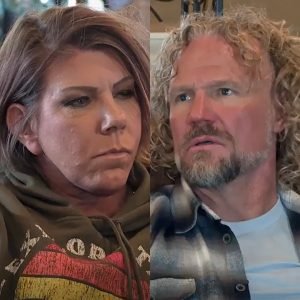
AN INCREASINGLY desperate Russia has begun deploying a mysterious new gas on the battlefield in Ukraine.
The sinister use of chemical warfare against the Ukrainian troops comes as Volodymyr Zelensky’s troops continue to push west on the frontline.
Russia has now used a mysterious WW1-style gas on the frontlines to choke Ukrainian soldiers fighting there, Kyiv claims.
However, Kyiv’s forces have been unable to recognise the chemical composition according to Colonel Artem Vlasiuk, Ukraine’s Support Forces’ Radiation, Chemical and Biological Protection Command.
Vlasiuk told The Kyiv Independent: “Ukraine is currently unable to identify the majority of the gas used on the battlefield, compared to previous months when it could diagnose about half of the chemicals.”
The colonel added: “Of the 323 recorded cases of Russia‘s chemical attacks in October, nearly all except 15 incidents were ‘unidentified’.”
Gas warfare is used to choke Ukrainian troops from their strongholds as Russia mounts an increasingly successful push westward.
Footage shows show examples of Russian forces using gas on the frontline to “smoke out” Ukrainian troops.
Vlasiuk has since pleaded for more Western high-end detector technology costing up to £460,000 to diagnose the toxins deployed by Vladimir Putin’s forces.
Vlasiuk said: “We can detect tear gas, but if the enemy uses something else more complex, newer, or a mix that is similar in composition but not tear gas, we can’t identify it.”
Ukraine is desperately short of the equipment to identify gases in Russia’s use of chemical weapons, it is claimed.
The mysterious new gas comes after Russia previously used banned gas agents in the ongoing Ukraine war.
Ukraine previously accused Russia of more than 4,600 gas attacks on the battlefield since the beginning of the full-scale invasion in 2022.
Among these are tear gas, as well as ammonia and chloropicrin, which dates as a weapon from the trenches of the First World War.
Chloropicrinthe attacks soft tissues of the respiratory system, and at higher doses can kill.
Poisoning causes profuse vomiting and blindness, as well as skin irritation.
The detectors are vital to establishing war crimes.
The use on the battlefield of chemical agents, even if non-lethal, for example tear gas is a violation of the 1993 Chemical Weapons Convention.
This post-Cold-War disarmament treaty bans deployment of chemical weapons in war and obliges countries to eliminate them.
Russians troops have not hidden their use of chemical weapons.
In one broadcast, RT state news agency journalist Andrey Filatov showed how Russian troops “smoked out” a Ukrainian machine gunner from a position near Avdiivka.
He said: “Here you can see the gas mask that the machine gunner was holding.
“The packaging from the cartridges.
“Here [you can see] the gas grenade that we dropped…”
Separately, Russian neo-Nazi military unit Rusich demonstrated its use of chemical weapons against Ukrainian positions.
They boasted: “We are throwing chloropicrin at the Ukrainian strongholds.”
What is the law on gas weapons?
CHEMICAL weapons were first used in a major war with World War I, when both sides used poisonous gas to cause intense suffering on the battlefield.
Chlorine, phosgene – a choking agent – and mustard gas which inflicts painful burns on the skin were some of the chemicals used.
It is estimated nearly 100,000 people died as a result of chemical attacks.
And since World War I, chemical weapons have caused more than one million casualties.
After public outrage, the Geneva Protocol, was signed in 1925 to prohibit the use of chemical weapons.
Today, any form of chemical gas is strictly prohibited in war under the Chemical Weapons Convention.
Since the end of World War II, almost all cases of chemical attacks in war have been obsolete outside of a few cases.
Most notably by Iraq in the 1980s against Iran.
RUSSIA’S CHEMICAL HISTORY
Earlier this year, Putin’s forces were accused of unleashing horrific chemical attacks on Ukrainian soldiers.
Russian troops were allegedly sending drones along the frontlines daily to drop banned packages full of tear gas and other dangerous chemicals on unsuspecting troops.
The terrifying use of the tactical drones has even forced Ukrainian fighters to carry gas masks with them in the trenches, says a top commander.
Any form of chemical gas is strictly prohibited in war under the Chemical Weapons Convention.
Russia has a chilling past with chemical weapons especially to target people tyrant Putin deems as a threat to his power.
In 2006, Russian defector Alexander Litvinenko was poisoned with polonium in London – and claimed Putin had directly ordered his assassination.
Then in 2018, former GRU agent Sergei Skripal and his daughter Yulia were poisoned with Novichok in Salisbury.
Anti-terror cops discovered the nerve agent used was military-grade Novichok, made in Russia – sparking a fresh wave of concern over the country’s production and use of chemical weapons.
Several Kremlin critics such as Alexei Navalny and Ilya Yashin have also told supporters they believed they were poisoned by chemical attacks ordered by Putin.
The Geneva Protocol of 1925 bans the use of poison gas in warfare
Signed in 1925, the Geneva protocol banned the use of poison gas on battlefields following the use of chemical warfare in World War One.
The protocol states that use of asphyxiating, poisonous or other gases, and of all analogous liquids, materials or devices, has been justly condemned by the general opinion of the civilised world.
Signatories declared to agreed to prohibit the use of chemical and bacteriological methods of warfare and international armed conflict.
The Protocol for the Prohibition of the Use in War of Asphyxiating, Poisonous or other Gases, and of Bacteriological Methods of Warfare was signed at Geneva on 17 June 1925 and entered into force on 8 February 1928.
Thirty-eight states originally signed the Protocol.
France was the first signatory to ratify the Protocol on 10 May 1926.
As of April 2021, 146 states have ratified, acceded to, or succeeded to the Protocol















